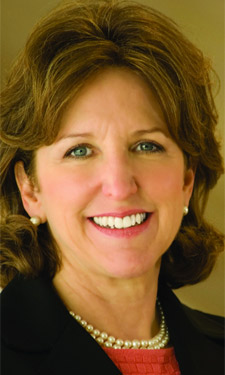 In September, U.S. Senator Kay Hagan (D-NC) along with Sens. John Kerry (D-MA) and Kirsten Gillibrand (D-NY) introduced the Community Parks Revitalization (CPR) Act. The bill is a companion measure to H.R. 709, the Urban Revitalization and Livable Communities Act (URLC), which was introduced by Representative Albio Sires (D-NJ) in 2011.
In September, U.S. Senator Kay Hagan (D-NC) along with Sens. John Kerry (D-MA) and Kirsten Gillibrand (D-NY) introduced the Community Parks Revitalization (CPR) Act. The bill is a companion measure to H.R. 709, the Urban Revitalization and Livable Communities Act (URLC), which was introduced by Representative Albio Sires (D-NJ) in 2011.
CPR would provide matching, federal grants for much-needed park and recreation infrastructure in metropolitan areas, helping to build communities, create jobs, enhance local economies, protect the health and well-being of our citizens and natural resources, and contribute to a higher quality of life for hard-working Americans and their families. A waiver allows the HUD Secretary discretion to award a percentage to less densely populated areas. This legislation would authorize HUD to administer three grant programs:
- Rehabilitation and Construction grants consisting of matching capital grants to rebuild, remodel, expand, or develop existing or new recreational areas or facilities.
- Innovation and Recreation Program grants consisting of matching grants to cover the costs of delivering innovative recreation programs or services, with a particular focus on those increasing access to recreation opportunities for returning veterans, military families, and at-risk youth.
- Recovery Action Program grants consisting of matching grants to cover the costs of developing plans for parks and recreation systems, which demonstrate a commitment to ongoing local efforts to plan and sustain any project approved for funding under this legislation.
A Personal View from the Hill
As the junior Senator representing North Carolina in Congress since 2008, Kay Hagan has strong feelings about the benefits that parks and recreation bring to communities in her state. North Carolina perennially takes top rankings for places to live and retire, a major distinction that has made the state highly competitive for attracting businesses, workers, and tourists as well as increasing property values. North Carolina’s extensive system of state and local park systems go a long way in explaining this.
Below, Sen. Hagan discusses her views on the role of recreation and parks in improving communities and why she has supported the field from Washington.
Parks & Recreation: Was there anything in your growing up in North Carolina and Florida that influenced your thinking about parks and recreation?
Sen. Hagan: I’ve always believed that it’s important to get outside and be active. I’ve seen firsthand the tremendous impact that parks, greenways, and recreation opportunities have had in my hometown of Greensboro, a three-time winner of the National Recreation and Park Association’s Gold Medal Award. North Carolina’s beautiful capital city, Raleigh, which is often referred to as “a city within a park,” has been recognized over the last several years by publications such as Forbes, Business Week, and the Wall Street Journal as the best city for business, the best city for jobs, and the nation’s best place to live. All of these accolades are due in large part to the high quality of the parks and recreational facilities present throughout the community, which were often cited when describing the criteria for making these “best of” selections.
P&R: How much did the economic value generated by parks weigh in your decision to sponsor the CPR Act?
Sen. Hagan: Job creation is my number-one priority, and investment in parks creates jobs. Urban parks are a catalyst for active outdoor recreation, an industry that supports more than six million jobs across the country and generates billions in retail sales and revenues for local and state governments.
P&R: Obesity (at all ages) has become a major public health issue. How does the CPR Act address this epidemic?
Sen. Hagan: Increased access to public parks and recreation is a key factor in combating childhood obesity, improving public health, and reducing the burden that health care costs place on our economy. Only a quarter of American adults engage in recommended levels of physical activity, but studies show that easier access to parks significantly increases the frequency of physical activity. This is important because a lack of physical activity increases the occurrence of chronic diseases.
P&R: Climate change and the conservation of our rich, natural resources have short- and long-term implications for the quality of life for all Americans. What role can the CPR Act play in assuring a better quality of life for future generations?
Sen. Hagan: One of the goals of the bill is to encourage the rehabilitation of existing urban recreational areas, as well as the construction of new ones, with environmentally beneficial components. This includes installing sustainable landscape features and up-cycled and recycled materials. My bill would also prioritize the selection of projects that provide environmental benefits to urban areas.
P&R: Parks and recreation agencies have many programs designed to help returning veterans and military families. Therapeutic, adaptive recreation, and other programs for disabled veterans suffering from PTSD and physical disabilities provide significant help. How will the CPR Act contribute to the transition of returning soldiers to civilian life, especially in North Carolina where the military has such a strong presence?
Sen. Hagan: My bill will help enhance North Carolina’s reputation as the most military-friendly state in the nation. The bill would allow for the creation and expansion of adaptive recreation programs specifically for military families, especially those programs targeting injured service members and injured veterans. My bill would build on previous efforts that have worked in North Carolina, such as the NRPA’s Parks: Return & Restore program. Through this program, the Fayetteville-Cumberland Parks and Recreation Department was able to purchase an accessible van in 2010 to transport veterans who want to be involved in therapeutic recreation programming.
Phil Hayward is Editor ofParks & Recreation.

